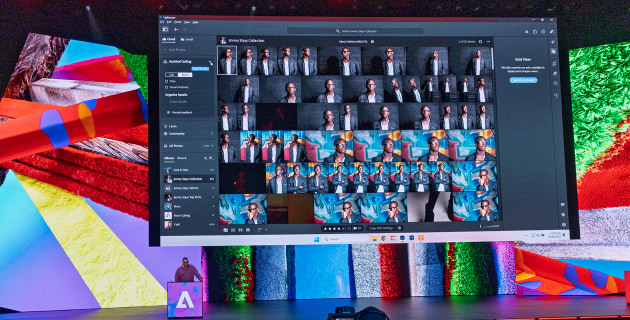
Adobe’s keynote at the MAX 2025 conference in Los Angeles delivered a clear message: AI is no longer just a generative tool; it’s your new creative assistant. The company unveiled a comprehensive set of updates across its Creative Cloud suite, focusing on ‘agentic AI’ that users can interact with via text. This includes a major new Firefly model and deep integrations with third-party AI, such as technology from Google and Topaz Labs.
The announcement comes as the latest step towards a future dominated by text prompt computing, reminiscent of past technological shifts. Consider the computer mouse, invented by Douglas Engelbart in 1963, which took over two decades to become mainstream. In contrast, AI’s adoption since 2023 has been remarkably swift, transforming how we interact with software by allowing us to command our tools with simple text instructions.
The Evolution of Text Prompt Computing
Text prompting is rapidly becoming a fundamental aspect of digital interaction, promising to enhance efficiency and creativity. This development is especially significant in fields like photography, where Adobe’s AI-assisted culling in Lightroom and Lightroom Classic has been eagerly anticipated. This feature allows photographers to streamline their workflow by automatically rejecting unwanted images and organizing similar shots.
At the Adobe MAX conference, the ‘Creative Park’ featured a physical ‘wishlist’ board for attendees to share their desires for future updates. Notably, several of last year’s top wishes have already been implemented, showcasing Adobe’s commitment to user feedback.
AI-Assisted Culling: A Game Changer for Photographers
AI-assisted culling works by analyzing large volumes of photos and using simple controls to filter out misfires, blinking shots, and poorly exposed images. For technically sound images, the AI employs a ‘stacking’ function to group similar photos, selecting the best one while organizing the rest beneath it. This feature is particularly beneficial for sports and wedding photographers who need to efficiently manage thousands of images.
Revolutionizing Image Editing and Creation
Another highlight from the keynote was the introduction of advanced features in Adobe Illustrator and Photoshop. The ‘Project Turntable’ feature allows users to rotate 2D vector images, transforming them into 3D-like objects. This technology is now being applied to photography, enabling photographers to alter the orientation of subjects in portraits seamlessly.
Photographer Terry White demonstrated this capability by using AI to adjust a portrait’s orientation in Photoshop, raising questions about the nature of photographic authenticity in the AI era. Additionally, a new ‘Colour Variance’ slider was introduced to address uneven skin tones, providing more uniform color adjustments.
Enhanced Multimedia Capabilities
Adobe’s updates extend beyond still images, with the Firefly Image Model 5 now in public beta, offering more photorealistic images at a higher resolution. The model also supports a “Prompt to Edit” feature for precise text-based image edits. Furthermore, Adobe introduced tools for generating custom soundtracks and multilingual voiceovers, enhancing the multimedia creation experience.
AI Assistants and Open Ecosystem
The introduction of new AI Assistants in beta for Photoshop and Adobe Express marks a shift towards a conversational, ‘agentic’ experience. Users can now perform complex tasks using plain language, streamlining workflows and enhancing productivity. This feature also offers personalized recommendations and tutorials, further supporting creative endeavors.
Adobe’s strategy includes integrating partner models from companies like Google, Topaz Labs, and ElevenLabs, positioning Creative Cloud as a hub for top-tier AI tools. This approach reflects a more open ecosystem, allowing users to leverage a diverse range of AI capabilities.
Looking Ahead: Future Innovations
Adobe’s keynote also hinted at future technologies, including Project Moonlight, an AI assistant designed to work across all Adobe apps, and Project Graph, a tool for building and automating creative workflows. These innovations underscore Adobe’s commitment to advancing creative technology and enhancing user experiences.
The developments announced at Adobe MAX 2025 highlight a transformative period in digital creativity, where AI not only assists but also empowers creators to push the boundaries of their craft. As these technologies continue to evolve, the creative landscape is set to become even more dynamic and accessible.







